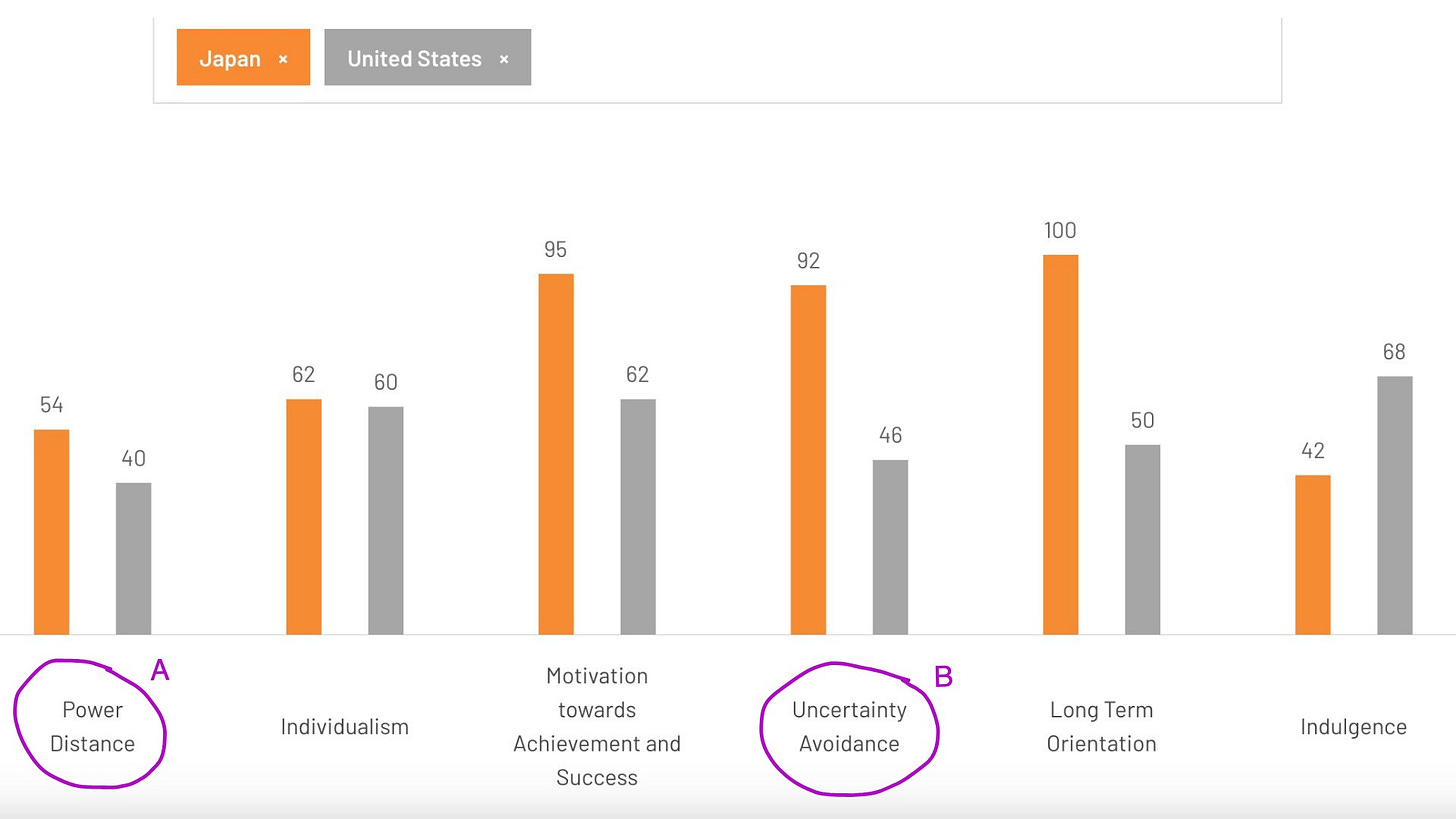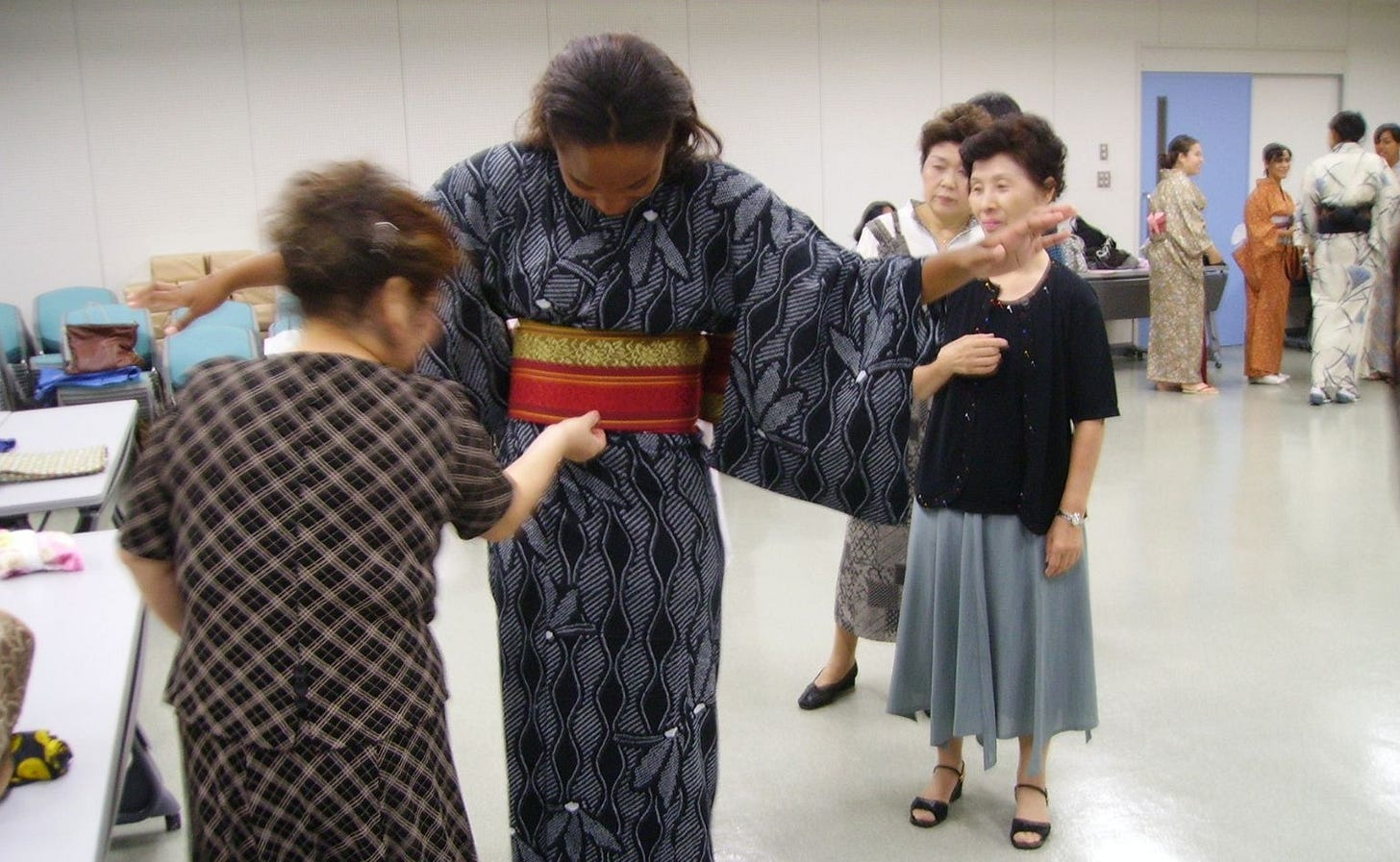Lesson 2: Understanding Culture and Adaptability
Decoding Business Culture in Tokyo
Welcome to Lesson Two of Cultural Intelligence 101: Culture and Adaptability! This lesson will dive into how cultural differences shape business interactions and what you can do to navigate. By the end of this lesson, you'll be able to:
Develop an understanding of cultural differences
Identify basic strategies for adapting to new cultural contexts
Culture is like an iceberg 🧊
Culture refers to the shared beliefs, values, behaviors, customs, and material objects that characterize a group or society. (Merriam-Webster, n.d)
Think of culture like an iceberg: what's above water represents language, rituals, and the visible things we do. But underneath the surface are the invisible deeper values, beliefs, and thought processes that influence people's behavior.
Business Culture in Japan
Imagine this… You just landed in Tokyo for your first business assignment and feel excited and ready to make a good impression. In your new office, you meet your colleague, Mr. Tanaka, who gives you a warm bow and his business card. Excited, you quickly glance at his card and slip it into your notebook, eager to chat with him. Immediately, you notice the disappointed look on Mr. Tanaka's face, but you shrug it off, hoping to lighten the mood before your first meeting.
Later, during a team meeting, you are excited to share your innovative ideas and encourage brainstorming among the team. But soon notice a change. Your teammates exchange uneasy glances, and later, you overhear a comment suggesting that you might not be the best fit for the role. What do you think went wrong?
The Culture Decoder: Hofstede's Cultural Dimensions Theory
Hofstede's Cultural Dimensions Theory is a great tool for exploring the different layers of culture. It helps us understand how a society's culture influences the values and behaviors of its people. The scale is scored from 0 - 100; the closer you are to 100, the higher you are on the scale.
There are six dimensions in total, but I want to focus on two that will help us understand what happened in the Japanese team meeting: Power Distance and Uncertainty Avoidance.
The country comparison tool is a valuable resource for comparing cultural dimensions between nations. In this case, we will compare Japan and the United States.

Power Distance
Power distance measures the value a society places on hierarchy and status differences. According to the country comparison chart (letter A), Japan has a higher power distance score of 54 than the United States, which has a score of 40. This indicates that Japan places a greater emphasis on hierarchy.
In Japan, swapping business cards is a meaningful ritual that shows respect for each person's role. Unlike in the U.S., where swapping business cards is a casual exchange of contact information. When handing over a business card, it is customary to use both hands to show respect and value for the interaction. If someone quickly grabs a business card and tucks it away, as one might do in the U.S., it could be perceived as rude or dismissive.
Uncertainty Avoidance
If we look at the country comparison chart (letter B), we see that Japan scored 92 in uncertainty avoidance, while the United States scored 46. This suggests that people in Japan generally prefer clear instructions and more information to reduce discomfort in uncertain situations. On the other hand, people in the United States tend to be more comfortable with ambiguity and adapt more quickly.
While brainstorming new ideas is often embraced in the United States, Japan favors clear and structured communication, as people there prefer to avoid uncertainty. Without specific details, the open-ended approach in the business meeting example made the Japanese colleagues uneasy about the work plans. Keeping things clear and organized could help everyone feel more comfortable and engaged.
Strategies for Adapting: The Three A's Framework
To help bridge these cultural gaps, consider using the Three A's Framework:
Awareness
Recognize cultural differences by acknowledging that your norms may not be universal. Consider how your actions could be viewed in another cultural context.
Adaptation
Research and observe to learn about local customs. For example, knowing the proper business etiquette in Japan would have provided insight into business card exchange and preferred communication styles.
Application
Put your knowledge into practice! The next time you receive a business card from a Japanese colleague, accept it with both hands, take a moment to appreciate the gesture, and store it carefully. It's a nice way to show respect and build connections!
Managing cultural differences is all about learning as you go. When you explore ideas like Power Distance and Uncertainty Avoidance, you start to see how your good intentions might come off differently than expected. By adapting to a new environment, you will show respect for local customs and help build stronger relationships.
Assignment: Let's do step two - Building Knowledge!
In the comments below, what invisible aspects of cultures have you encountered and navigated?
See you next week for Lesson 3: Communication Across Cultures.
References:
Merriam-Webster. (n.d.). Culture. In Merriam-Webster.com dictionary. Retrieved from https://www.merriam-webster.com/dictionary/culture
Hofstede, G. (1980). Culture's consequences: International differences in work-related values. Beverly Hills, CA: Sage.



